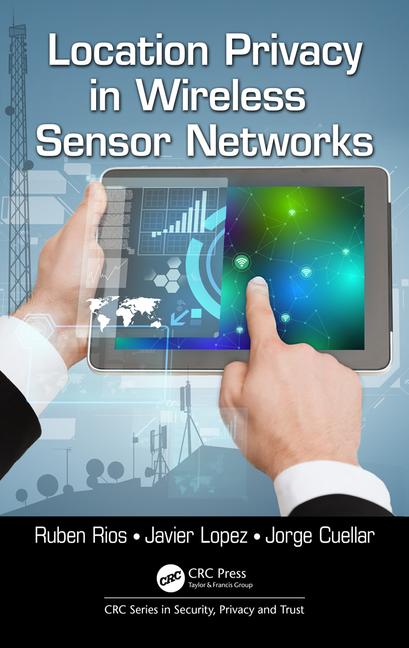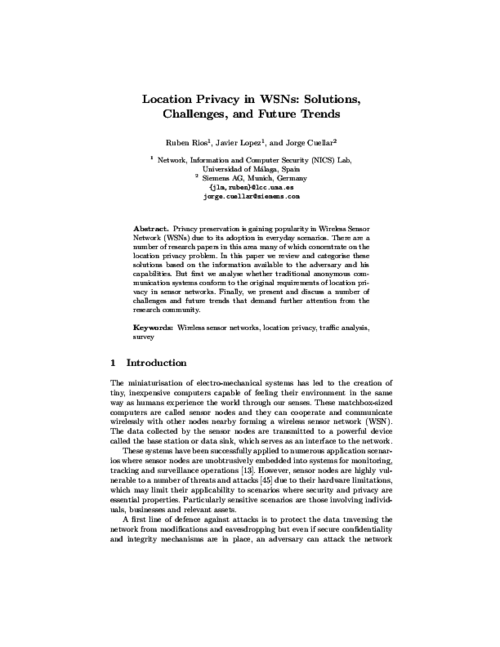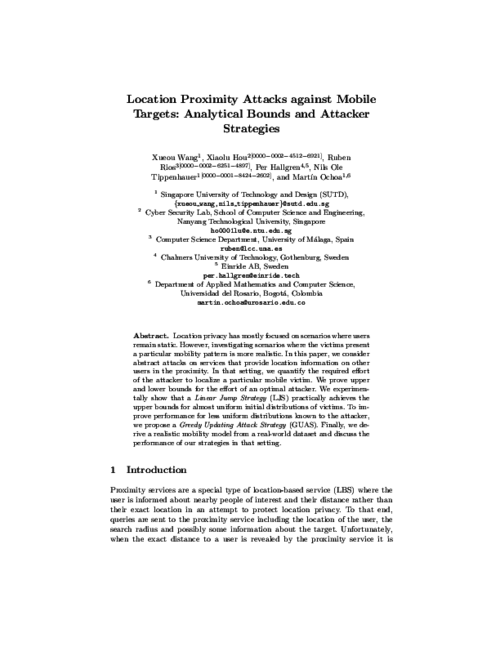 ] Type Year
] Type Year |
"Location Privacy in Wireless Sensor Networks", CRC Series in Security, Privacy and Trust, Taylor & Francis, 2016.  |  |
Foundations of Security Analysis and Design VII, vol. 8604, no. LNCS, Springer, pp. 244-282, 2014. DOI
Abstract
Privacy preservation is gaining popularity in Wireless Sensor Network (WSNs) due to its adoption in everyday scenarios. There are a number of research papers in this area many of which concentrate on the location privacy problem. In this paper we review and categorise these solutions based on the information available to the adversary and his capabilities. But first we analyse whether traditional anonymous communication systems conform to the original requirements of location privacy in sensor networks. Finally, we present and discuss a number of challenges and future trends that demand further attention from the research community.

23rd European Symposium on Research in Computer Security (ESORICS 2018), LNCS 11099, Springer, pp. 373-392, 2018. DOI
Abstract
Location privacy has mostly focused on scenarios where users remain static. However, investigating scenarios where the victims present a particular mobility pattern is more realistic. In this paper, we consider abstract attacks on services that provide location information on other users in the proximity. In that setting, we quantify the required effort of the attacker to localize a particular mobile victim. We prove upper and lower bounds for the effort of an optimal attacker. We experimentally show that a Linear Jump Strategy (LJS) practically achieves the upper bounds for almost uniform initial distributions of victims. To improve performance for less uniform distributions known to the attacker, we propose a Greedy Updating Attack Strategy (GUAS). Finally, we derive a realistic mobility model from a real-world dataset and discuss the performance of our strategies in that setting.
